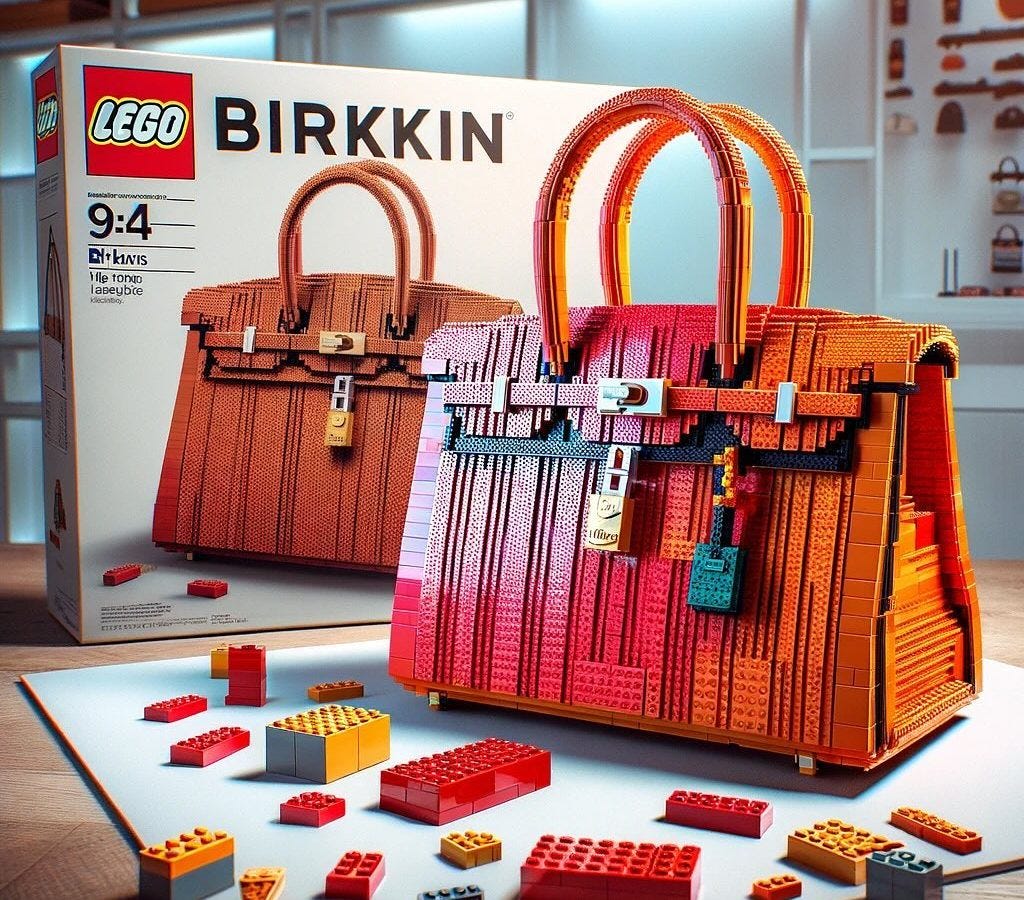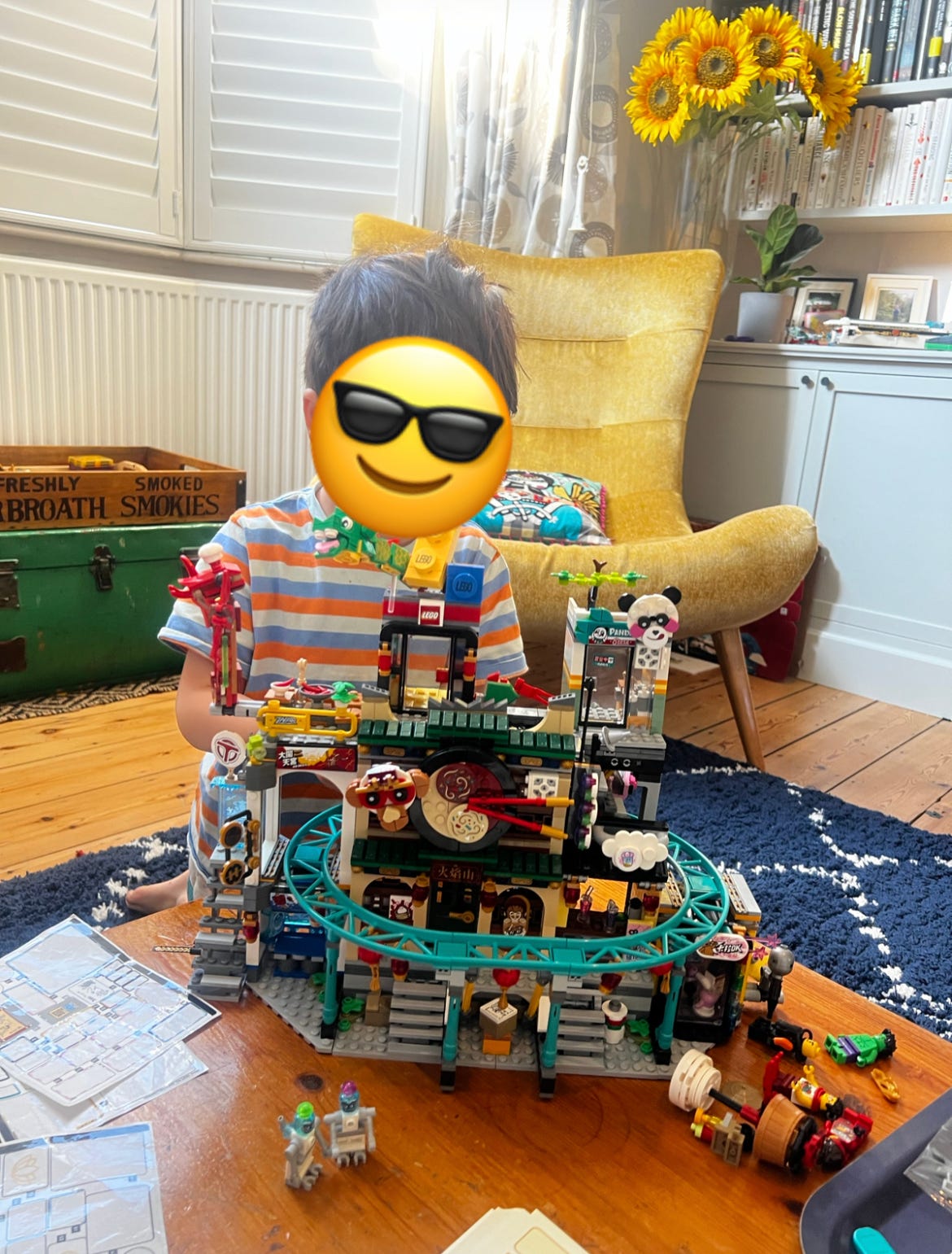A 2 April update on our LEGO 'collaboration'
Behind the scenes of an April Fools Joke, and what it means for the future normal.
So, it’s been just over 24h since myself and Rohit ‘announced’ our limited edition collaboration with LEGO. A very limited edition, only available on April 1 😇
We thought we had dropped in enough hints – from the “decade-long series of partnerships with brands that have four letters in their name”, to the increasingly ridiculous mooted collaborations such as a “robot-operated pedalo, available via the UBER app” and the CTA – “please reach out to Claude DALL·E”.
Oh, and the images…
Many of you got the joke. But we also got a whole bunch of comments and DMs from people who were believers and who actually wanted to buy these sets. Which is awesome (and yes, there was undoubtedly a not-so-small part of us that was subconsciously manifesting here!).
We’d like to apologise to all these people. Although I know we have a few readers & connections at LEGO, so… how about it?!
But the responses also got me thinking – because while this was just a bit of creative fun the implications are profound, exciting and a little scary, all at the same time:
Crowd-Powered Creativity (and how we did it)
Truth Social (and fooling all of the people some of the time)
Exponential Expectations (and what the kids thought of it)
Note: It was also both probably my most liked and my most unsubscribed from email ever! So I guess it’s true what they say about jokes being divisive. But if you have friends or colleagues who’d enjoy some occasionally-irreverent musings on our future normal – then please do share it with them:
1. Behind-the-scenes: Crowd-Powered Creativity
It was astonishingly quick and easy to pull this together, taking just a few hours end-to-end:
I uploaded a PDF copy of the book into Claude.ai
I then asked it to help me “summarise specific chapters, and convert them into text prompts that I can give to an AI text-to-image generator.”
See the full conversation here (pasted into a GDoc, as Claude doesn’t allow sharing)
I then headed to ChatGPT, where I got it to draft the press release, and also used the LegolizeGPT to create the box graphics from the text prompts.
I made a few extra images, to give me some choice. Below are two of the ‘rejects’ – I thought the misspelling on ‘loneliness’ would be too obvious, and the colours on ‘Psychedelic Wellness’ felt a bit muted – although this was one I thought would be very fun!
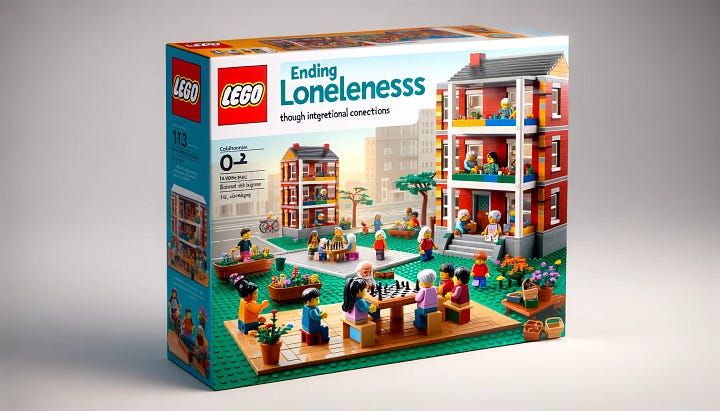
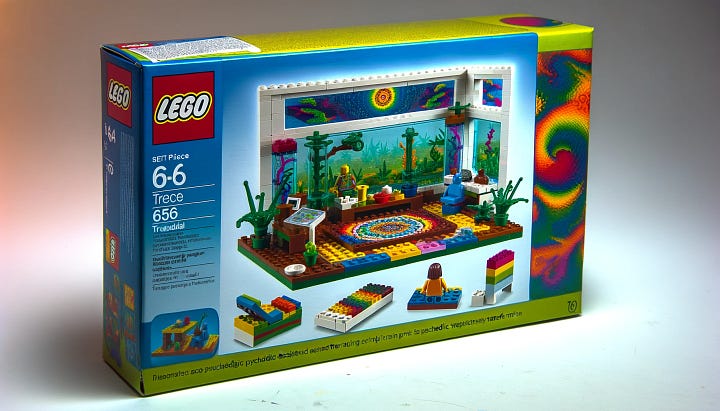
This is what the democratisation of creativity looks like. Back in August last year, I wrote:
Crowdsourcing is nothing new. But AI will take it to new levels by making it even easier for people to move from idea to (passable) output with minimal technical skill. An avalanche of content is coming. Sure, most will be terrible. But there will be brilliance too, and a few standout marketers will attract and engage wildly democratic and diverse crowds to supercharge their brands’ creative output. Will you be one of them?
And after an AI-generated LEGO x Hermes Birkin bag went viral, Adobe’s Chief Product Officer
wrote about ‘open-sourced R&D’:The next generation of product development and brand partnership exploration, especially among consumer brands, will increasingly be done by customers using AI creative tools, validated on social platforms, and then executed by companies.
This is the new reality of innovation, as enabled by AI.
And for all the threat of disruption, it’s actually bigger, well-established, iconic brands (like LEGO) who benefit from most from this – they are the ones that customers know and love well enough to ‘do the work for’, and they have enough existing brand imagery that AI can use to generate close-enough new ideas from.
2. Truth Social (and fooling all of the people some of the time)
“You can fool some of the people all of the time, and all of the people some of the time, but you can not fool all of the people all of the time.” ― Abraham Lincoln
This is where I started to feel a bit more guilty. My inbox was filling up with supportive messages and congratulatory DMs. From people I respect! From people I hope to work with in the future!
When we think about misinformation, we usually think about our technical or educational vulnerabilities. What I mean by this is:
Technical – the capability for people to create content that is indistinguishable from ‘real’ content.
Educational – the capability of people to spot this fake content as they encounter it.
And ‘people’ here really means other people – I suspect most readers project their fears about deepfaked content and misinformation onto other people. I’ve been guilty of this too! Because we’re smart savvy enough to spot fake content, aren’t we?
Now I’m not so sure. Indeed I’ll carry this with me as a powerful and humbling reminder that being informed and smart is no defence against being taken in by fake content. It’s less of a question of capabilities, but capacity.
Social media is shallow – we exist in a sense of continuous partial attention. We know people don’t read posts before they share them. Especially here, when the stakes were low. Again, no judgement – I’m absolutely as guilty of this as everyone who DM’d me!
One final thought on this. What if instead of watermarks, social media platforms pre-empted this very human frailty?
Just as your email now reminds you if you’ve used the word ‘attachment’ but haven’t actually attached a file, what if AI could act as a sense check before you shared or commented on something that didn’t add up? Now that would be a great, people-first AI strategy!
3. Exponential Expectations (what the kids thought of it)
My final insight came from my son. He’s five, which means after my mortgage, LEGO is pretty much my next biggest expense.
When I showed him some of the box designs, excited that I could share a glimpse of what I do all day, he instantly asked if we could get the one with the drones (they are big in our house right now ;)
When I tried to explain that I’d just made the images using my phone1 and they weren’t real, he couldn’t understand, “but why can’t we make the exact LEGO set that we want?”
I’ve spoken a lot about ‘The Expectation Economy’ – how experiences set expectations. Customer experiences don’t respect industry or logistical or even regulatory hurdles – when people see that something is possible once, they start to expect it everywhere.
AI will remove all limits to the next generation’s expectations. You can imagine it, now you should be able to create it. That’s challenging – but imagine how enthusiastically they’ll embrace the companies that are able to bridge that gap.
What’s Your Future Normal?
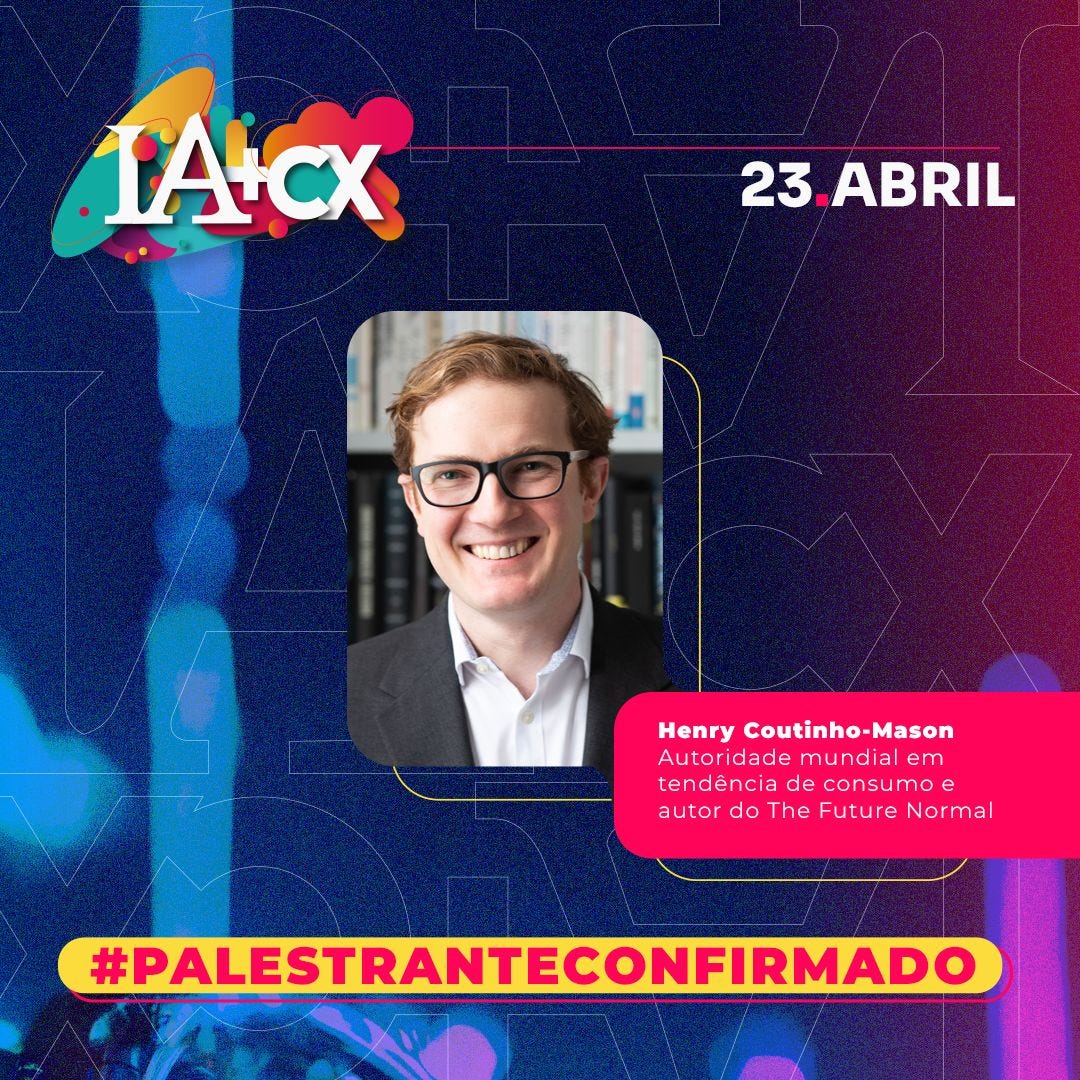
My diary is starting to fill up again with upcoming keynotes planned for Brazil, Saudi Arabia, Slovenia, and a few more here in the UK (including sunny Bournemouth!).
If you’d like me to bring fresh and relevant perspectives on what’s next to your event or leadership team meeting then please reach out directly to Renee Strom or check out my speaking site.
For any parents reading – a previous AI adventure was when he dictated something he wanted to see into the phone, DALL-E turned it into an image, which I then got printed on a t-shirt (which he loves). I’d love to hear any other creative ways you’ve found to give your kids an early taste of AI.





